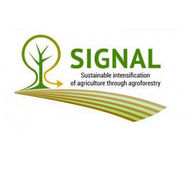Digging deeper: microbial communities in subsoil are strongly promoted by trees in temperate agroforestry systems (2022)
Beule L., Guerra V., Lehtsaar E., Vaupel A.
Plant and Soil, 480 (1-2), 423-437
doi:10.1007/s11104-022-05591-2
Abstract
Abstract Aims Temperate alley-cropping agroforestry systems maintain agricultural production while offering several environmental benefits. Central benefits of agroforestry systems such as the ‘safety-net’-role of the trees for leached nutrients are mainly due to processes occurring below the soil surface: the subsoil. Microorganisms in the subsoil may play a key role in the ‘safety-net’-function as they can improve the capturing and uptake of nutrients by the trees. Systematic investigations of microbial communities in temperate agroforestry systems, however, are restricted to topsoil. Methods We quantified bacteria, fungi, and functional groups of microorganisms in the topsoil and subsoil of two alley-cropping systems using real-time PCR. Topsoil and subsoil samples were collected in the tree rows and at multiple distances from the trees within the crop rows of the agroforestry systems as well as at an adjacent monoculture cropland. Results Microbial population size decreased with soil depth likely due to limited resource availability in subsoil. Tree rows in agroforestry systems not only promote soil microbial populations in both the topsoil and subsoil but the promotion also extends gradually into the crop rows of the systems. The promotion of microorganisms through trees is stronger in subsoil than topsoil, pointing at more intense resource scarcity in the subsoil than topsoil. Conclusions We propose that tree root-derived resources and root litter, which are scarce in agricultural subsoils, triggered the strong positive response of the subsoil community to the trees. Finally, we provide initial evidence that subsoil microorganisms contribute to the ‘safety-net’-role of the trees in agroforestry systems.